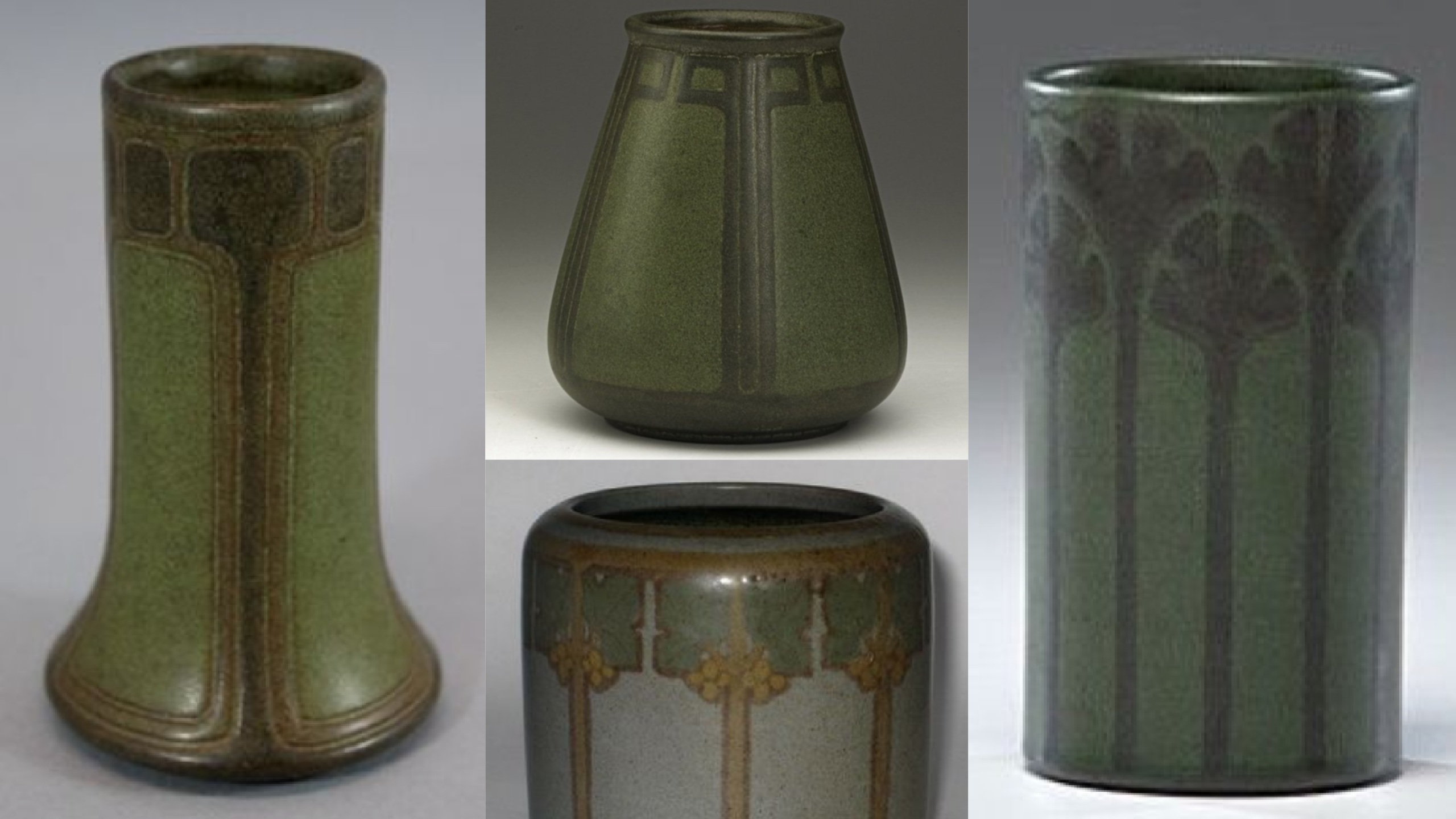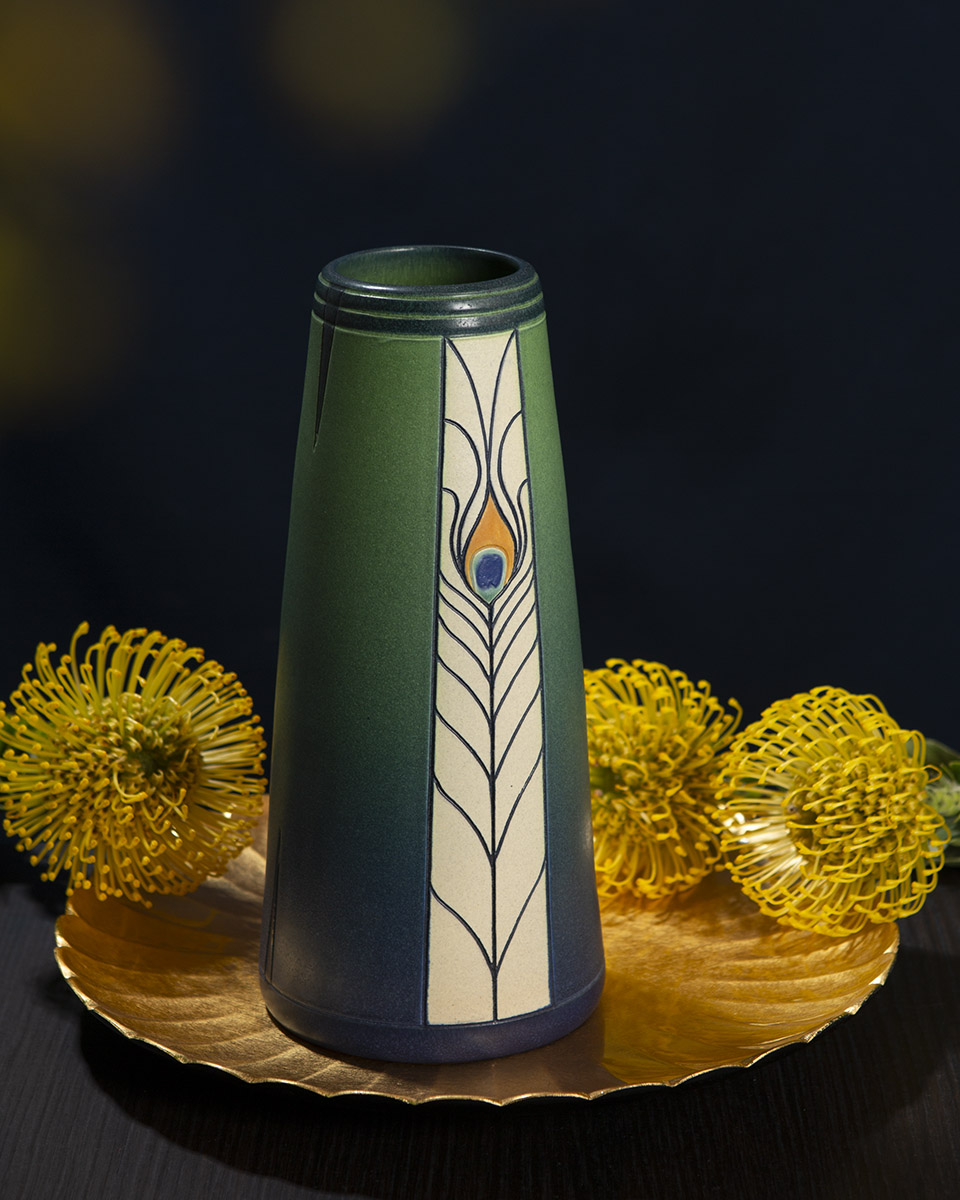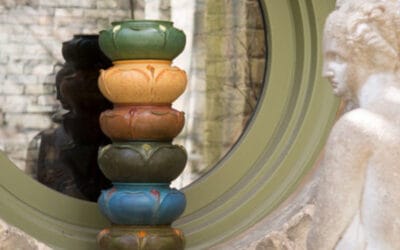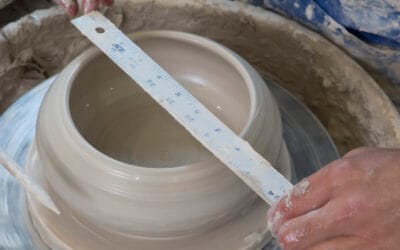The Historic Marblehead Pottery
Marblehead Pottery, named after the small harbor town, Marblehead, Massachusetts, originated in 1904 as a small operation that served as art therapy for the patients in the local sanitarium. However, in 1905, Arthur Baggs purchased the pottery and turned it into a small production pottery studio, that created the recognizable, quintessential Marblehead-style pieces. The studio never employed more than 6 people. Their small output and refined design aesthetic make these pieces special among Arts and Crafts pottery collectors.
What is special about Marblehead Pottery?
We admire Marblehead’s refined – almost modern – aesthetic. Their glazes are tight, but not rigid, and their pieces have a simple softness that comes from the lightly incised lines and tonal, stony glaze palette. From a ceramic artist’s perspective they were making something truly special and truly difficult to replicate.
From inspiration to aptitude – a decade of trial and error
Nothing could have been more challenging to recreate than Marblehead’s style. Our high relief sculpture and flowing glazes are so different from techniques and materials that Marblehead employed. Perhaps that challenge made the endeavor so enticing! Running glazes mean that we always avoid horizontal lines, which tend to become obscured when the glaze flows over them in the kiln. In early Marblehead attempts we thinned out the glaze in order to apply it in a scant-dipped coat. To no avail. The glazes still ran over the black lines. For the next attempts we reformulated the glazes to run less by removing some of the glazes’ flux. But then our surfaces lacked interest and looked stagnant. It wasn’t until we learned how to spray our glazes (about 5 years ago) that we finally had a solution. With a spraying technique we can apply our inherently interesting glazes thin enough so that they don’t run and cause the decoration to bleed.
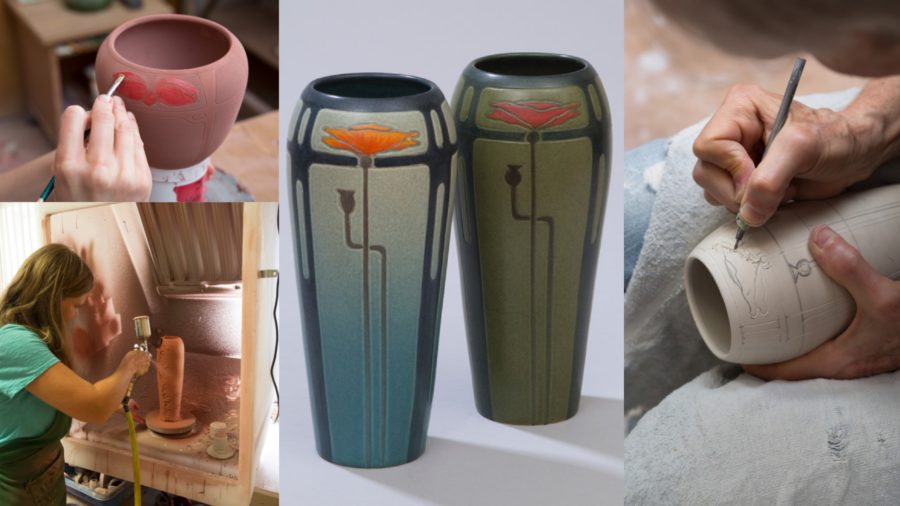
A new bag of tricks = an expanded body of work
We finally conquered our materials. This process has led to an avenue of exploration that we proudly see as expanding on the great Marblehead’s legacy, but with an Ephraim twist.

